शटर डोर रोल फॉर्मिंग मशीन बनाम पारंपरिक शटर डोर विनिर्माण: कौन सा बेहतर है? 13 शटर डोर रोल फॉर्मिंग मशीनें एक सतत धातु पट्टी को एक श्रृंखला रोलर्स के माध्यम से खिलाकर काम करती हैं जो धातु को धीरे-धीरे शटर डोर के वांछित आकार में मोड़ती और आकार देती हैं। मशीन कंप्यूटर-नियंत्रित होती है, जो धातु के आकार देने और कटिंग में उच्च स्तर की सटीकता और सुसंगतता सुनिश्चित करती है। पारंपरिक विनिर्माण तरीकों की तुलना में, शटर डोर रोल फॉर्मिंग मशीनें कई प्रमुख लाभ प्रदान करती हैं। सबसे महत्वपूर्ण लाभों में से एक गति है। शटर डोर रोल फॉर्मिंग मशीनें शटर डोर को तेजी से और कुशलता से उत्पादित कर सकती हैं, प्रति मिनट 60 फीट तक सामग्री उत्पादित करने की क्षमता के साथ। इससे परियोजना समयसीमाएं और श्रम लागत काफी कम हो सकती हैं।
शटर डोर रोल बनाने की मशीनें

अनुकूलन शटर डोर रोल फॉर्मिंग मशीनों का एक और लाभ है। ये मशीनें विभिन्न आकारों, आकृतियों और सामग्रियों के शटर डोर उत्पादित करने के लिए अनुकूलित की जा सकती हैं। इससे वे छोटे व्यावसायिक भवनों से लेकर बड़े औद्योगिक गोदामों तक विभिन्न अनुप्रयोगों के लिए एक बहुमुखी विकल्प बन जाती हैं।
कुल मिलाकर, शटर डोर रोल फॉर्मिंग मशीनें पारंपरिक विनिर्माण तरीकों पर गति, सटीकता और अनुकूलन के मामले में कई प्रमुख लाभ प्रदान करती हैं। इन मशीनों का उपयोग करके, निर्माता उच्च-गुणवत्ता वाले शटर डोर को तेजी से और कुशलता से उत्पादित कर सकते हैं, परियोजना समयसीमाओं और श्रम लागत को कम करने में मदद करके।
पारंपरिक शटर डोर विनिर्माण
पारंपरिक
विनिर्माण तरीके व्यक्तिगत धातु टुकड़ों को काटने, वेल्डिंग और असेंबल करने में शामिल हैं ताकि अंतिम उत्पाद बनाया जा सके। यह प्रक्रिया उच्च कौशल स्तर की आवश्यकता रखती है और समय लेने वाली हो सकती है, जिससे उच्च श्रम लागत और लंबी परियोजना समयसीमाएं आती हैं।
पारंपरिक शटर डोर विनिर्माण तरीकों का एक लाभ यह है कि वे छोटी परियोजनाओं या कस्टम डिजाइनों के लिए अधिक लागत-प्रभावी हो सकते हैं। ऐसा इसलिए क्योंकि पारंपरिक विनिर्माण तरीकों के लिए आवश्यक उपकरण और सामग्रियां छोटे पैमाने की परियोजनाओं के लिए अक्सर अधिक आसानी से उपलब्ध और किफायती होती हैं।
-
 विद्युत कैबिनेट फ्रेम रोल बनाने की मशीन
विद्युत कैबिनेट फ्रेम रोल बनाने की मशीन -
 दीन रेल रोल बनाने की मशीन
दीन रेल रोल बनाने की मशीन -
 केबल सीढ़ी रोल बनाने की मशीन
केबल सीढ़ी रोल बनाने की मशीन -
 पीवी माउंटिंग ब्रैकेट सी शेप प्रोफाइल रोल बनाने की मशीन
पीवी माउंटिंग ब्रैकेट सी शेप प्रोफाइल रोल बनाने की मशीन -
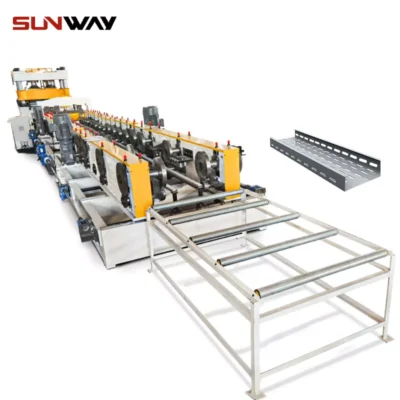 केबल ट्रे रोल बनाने की मशीन
केबल ट्रे रोल बनाने की मशीन -
 पीवी माउंटिंग ब्रैकेट रोल बनाने की मशीन (एचएटी / ओमेगा प्रोफाइल)
पीवी माउंटिंग ब्रैकेट रोल बनाने की मशीन (एचएटी / ओमेगा प्रोफाइल) -
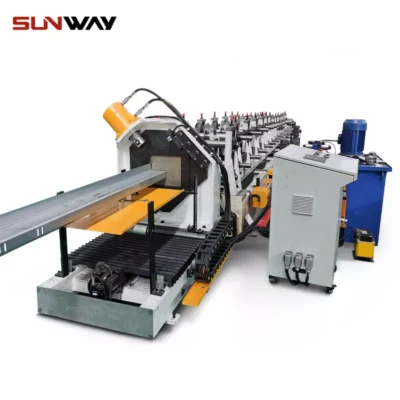 पीवी माउंटिंग ब्रैकेट जेड शेप प्रोफाइल रोल बनाने की मशीन
पीवी माउंटिंग ब्रैकेट जेड शेप प्रोफाइल रोल बनाने की मशीन -
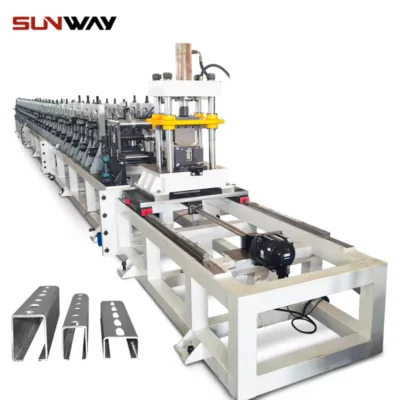 सौर बढ़ते अकड़ चैनल रोल बनाने की मशीन
सौर बढ़ते अकड़ चैनल रोल बनाने की मशीन -
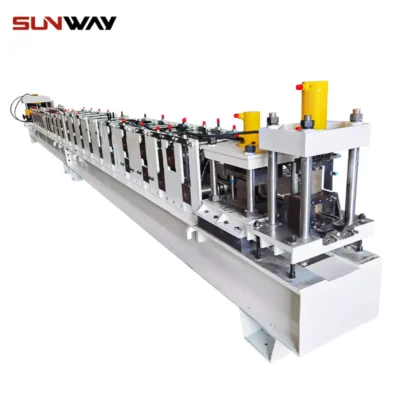 स्ट्रट चैनल रोल बनाने की मशीन
स्ट्रट चैनल रोल बनाने की मशीन
हालांकि, पारंपरिक विनिर्माण तरीके शटर डोर रोल फॉर्मिंग मशीनों की तुलना में धीमे और कम सटीक हो सकते हैं। वेल्डिंग और असेंबली कुशल श्रम की आवश्यकता रखती है और समय लेने वाली हो सकती है, जिससे लंबी परियोजना समयसीमाएं और उच्च श्रम लागत आती हैं। इसके अतिरिक्त, तैयार उत्पाद की गुणवत्ता कार्यकर्ताओं के कौशल स्तर पर निर्भर हो सकती है, जिससे असंगतियां और शटर डोर पैनलों में रिसाव या गैप जैसी संभावित समस्याएं हो सकती हैं। shutter doors पारंपरिक विनिर्माण तरीकों का एक और दोष यह है कि वे शटर डोर रोल फॉर्मिंग मशीनों की तुलना में कम अनुकूलन योग्य हो सकते हैं। चूंकि प्रत्येक धातु टुकड़ा व्यक्तिगत रूप से काटा और असेंबल किया जाता है, इसलिए आकार या आकृति में अद्वितीय शटर डोर बनाना कठिन हो सकता है।
कुल मिलाकर, पारंपरिक शटर डोर विनिर्माण तरीके छोटी परियोजनाओं या कस्टम डिजाइनों के लिए लागत-प्रभावी हो सकते हैं, लेकिन वे शटर डोर रोल फॉर्मिंग मशीनों की तुलना में धीमे, कम सटीक और कम अनुकूलन योग्य हो सकते हैं।
शटर डोर रोल फॉर्मिंग मशीनों और पारंपरिक विनिर्माण तरीकों की तुलना
शटर डोर रोल फॉर्मिंग मशीन बनाम पारंपरिक शटर डोर विनिर्माण: कौन सा बेहतर है? 14
शटर डोर रोल फॉर्मिंग मशीनों की तुलना पारंपरिक विनिर्माण तरीकों से करते समय, लागत, गति, गुणवत्ता और अनुकूलन जैसे कई कारकों पर विचार किया जाना चाहिए।
लागत: शटर डोर रोल फॉर्मिंग मशीनें प्रारंभिक खरीद में अधिक महंगी हो सकती हैं, लेकिन लंबे समय में श्रम लागत कम करके और दक्षता बढ़ाकर धन की बचत कर सकती हैं। पारंपरिक विनिर्माण तरीके छोटी परियोजनाओं या कस्टम डिजाइनों के लिए अधिक लागत-प्रभावी हो सकते हैं।
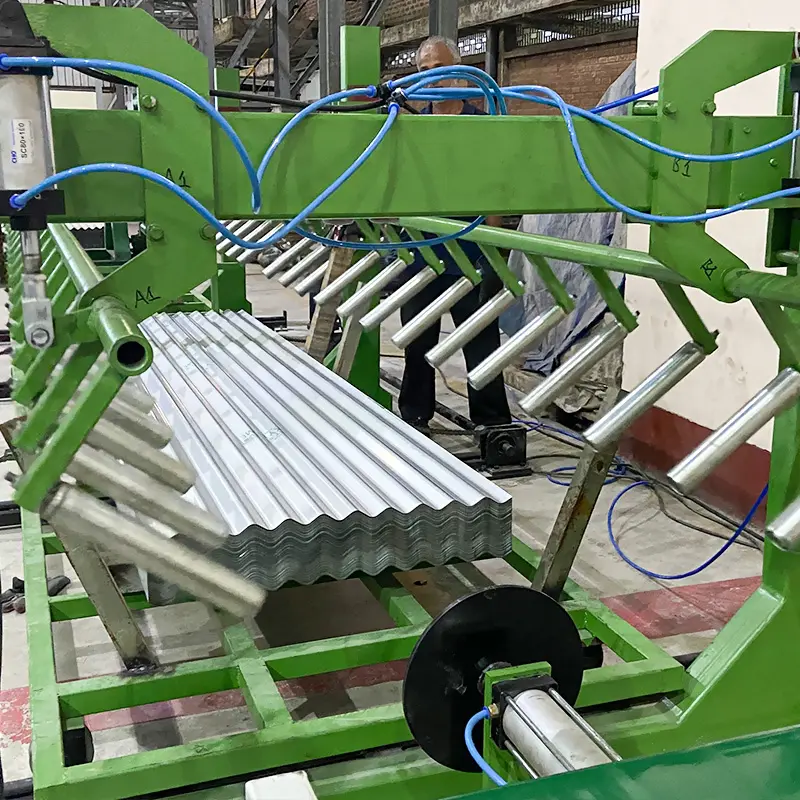
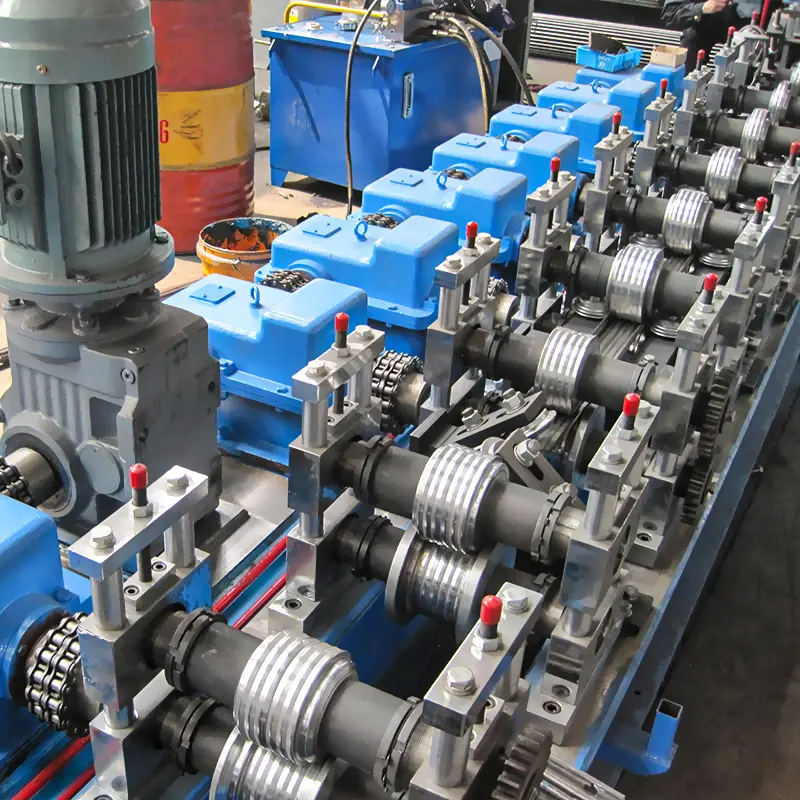
अनुकूलन: शटर डोर रोल फॉर्मिंग मशीनें उच्च स्तर का अनुकूलन प्रदान करती हैं, जिससे निर्माता विभिन्न आकारों, आकृतियों और सामग्रियों के शटर डोर उत्पादित कर सकते हैं। पारंपरिक विनिर्माण तरीके कम अनुकूलन योग्य हो सकते हैं और कस्टम डिजाइनों के लिए अधिक विशेष उपकरण और कौशल की आवश्यकता हो सकती है।
- कुल मिलाकर, शटर डोर रोल फॉर्मिंग मशीनें गति, सटीकता और अनुकूलन के मामले में महत्वपूर्ण लाभ प्रदान करती हैं, जबकि पारंपरिक विनिर्माण तरीके छोटी परियोजनाओं या कस्टम डिजाइनों के लिए अधिक लागत-प्रभावी हो सकते हैं। अंततः, इन दोनों तरीकों में से चयन परियोजना की विशिष्ट आवश्यकताओं पर निर्भर करेगा, जिसमें परियोजना का आकार और दायरा, वांछित अनुकूलन स्तर और उपलब्ध संसाधन तथा बजट शामिल हैं।
- शटर डोर रोल फॉर्मिंग मशीनों बनाम पारंपरिक विनिर्माण तरीकों की लागत-लाभ विश्लेषण
- शटर डोर रोल फॉर्मिंग मशीनों बनाम पारंपरिक विनिर्माण तरीकों की लागत-लाभ विश्लेषण पर विचार करते समय, कई कारकों पर ध्यान दिया जाना चाहिए। इनमें उपकरण और श्रम की लागत, सामग्रियों की लागत और परियोजना समयसीमाओं पर प्रभाव शामिल हैं।
- उपकरण और श्रम की लागत: शटर डोर रोल फॉर्मिंग मशीनें प्रारंभिक खरीद में अधिक महंगी हो सकती हैं, जिनकी कीमतें दसियों हज़ार से लेकर लाखों डॉलर तक होती हैं। हालांकि, ये मशीनें लंबे समय में श्रम लागत कम करके और दक्षता बढ़ाकर धन की बचत कर सकती हैं। पारंपरिक विनिर्माण तरीकों को अधिक कुशल श्रम की आवश्यकता हो सकती है, जिससे उच्च श्रम लागत आती है।
कुल मिलाकर, शटर डोर रोल फॉर्मिंग मशीनें गति, सटीकता और अनुकूलन के मामले में महत्वपूर्ण लाभ प्रदान करती हैं, जबकि पारंपरिक विनिर्माण विधियां छोटे प्रोजेक्ट्स या कस्टम डिजाइनों के लिए अधिक लागत-प्रभावी हो सकती हैं। अंततः, इन दोनों विधियों के बीच चुनाव प्रोजेक्ट की विशिष्ट आवश्यकताओं पर निर्भर करेगा, जिसमें प्रोजेक्ट का आकार और दायरा, वांछित अनुकूलन स्तर, उपलब्ध संसाधन और बजट शामिल हैं।
शटर डोर रोल फॉर्मिंग मशीनों बनाम पारंपरिक विनिर्माण विधियों की लागत-लाभ विश्लेषण
शटर डोर रोल फॉर्मिंग मशीनों बनाम पारंपरिक विनिर्माण विधियों की लागत-लाभ विश्लेषण पर विचार करते समय, कई कारकों पर ध्यान देना चाहिए। इनमें उपकरण और श्रम की लागत, सामग्री की लागत, तथा प्रोजेक्ट समयसीमाओं पर प्रभाव शामिल हैं।
- उपकरण और श्रम की लागत: शटर डोर रोल फॉर्मिंग मशीनें प्रारंभिक खरीद में अधिक महंगी हो सकती हैं, जिनकी कीमतें दसियों हजार से लेकर लाखों डॉलर तक होती हैं। हालांकि, ये मशीनें लंबे समय में श्रम लागत को कम करके और दक्षता बढ़ाकर धन की बचत कर सकती हैं। पारंपरिक विनिर्माण विधियों में अधिक कुशल श्रम की आवश्यकता हो सकती है, जिससे श्रम लागत अधिक हो जाती है।
- सामग्री की लागत: शटर डोर रोल फॉर्मिंग मशीनों और पारंपरिक विनिर्माण विधियों दोनों के लिए सामग्री की लागत समान हो सकती है, क्योंकि दोनों विधियां आमतौर पर एक ही सामग्री का उपयोग करती हैं। हालांकि, चूंकि शटर डोर रोल फॉर्मिंग मशीनें कम अपशिष्ट उत्पन्न करती हैं और अधिक सटीक कटिंग प्रदान करती हैं, इसलिए अपशिष्ट कम हो सकता है और सामग्री की लागत कम हो सकती है।
- प्रोजेक्ट समयसीमाओं पर प्रभाव: शटर डोर रोल फॉर्मिंग मशीनें शटर डोरों को तेजी से और कुशलतापूर्वक उत्पादित कर सकती हैं, जिसमें प्रति मिनट 60 फीट तक सामग्री का उत्पादन करने की क्षमता होती है। इससे प्रोजेक्ट समयसीमाएं काफी कम हो सकती हैं और श्रम लागत घट सकती है। पारंपरिक विनिर्माण विधियां धीमी हो सकती हैं और असेंबली तथा वेल्डिंग के लिए अधिक समय ले सकती हैं, जिससे प्रोजेक्ट समयसीमाएं लंबी हो जाती हैं और श्रम लागत बढ़ जाती है।
कुल मिलाकर, हालांकि शटर डोर रोल फॉर्मिंग मशीनों की प्रारंभिक लागत अधिक हो सकती है, लेकिन वे लंबे समय में श्रम लागत कम करके और दक्षता बढ़ाकर धन की बचत कर सकती हैं। इसके अलावा, वे कम अपशिष्ट उत्पन्न करती हैं और प्रोजेक्ट समयसीमाओं में सुधार करती हैं, जिससे अतिरिक्त लागत बचत होती है। हालांकि, पारंपरिक विनिर्माण विधियां छोटे प्रोजेक्ट्स या कस्टम डिजाइनों के लिए अधिक लागत-प्रभावी हो सकती हैं। शटर डोर रोल फॉर्मिंग मशीनों बनाम पारंपरिक विनिर्माण विधियों का उपयोग करने का निर्णय अंततः प्रोजेक्ट की विशिष्ट आवश्यकताओं और उपलब्ध संसाधनों पर निर्भर करेगा।
शटर डोर रोल फॉर्मिंग मशीनें पारंपरिक विनिर्माण विधियों पर महत्वपूर्ण लाभ प्रदान करती हैं। वे शटर डोरों को तेजी से और कुशलतापूर्वक उच्च सटीकता और स्थिरता के साथ उत्पादित कर सकती हैं। जबकि पारंपरिक विनिर्माण विधियां छोटे प्रोजेक्ट्स या कस्टम डिजाइनों के लिए अधिक लागत-प्रभावी हो सकती हैं, शटर डोर रोल फॉर्मिंग मशीनें लंबे समय में श्रम लागत कम करके, दक्षता बढ़ाकर और प्रोजेक्ट समयसीमाओं में सुधार करके धन की बचत कर सकती हैं। अंततः, शटर डोर रोल फॉर्मिंग मशीनों बनाम पारंपरिक विनिर्माण विधियों का उपयोग करने का निर्णय प्रोजेक्ट की विशिष्ट आवश्यकताओं और उपलब्ध संसाधनों पर निर्भर करेगा।
